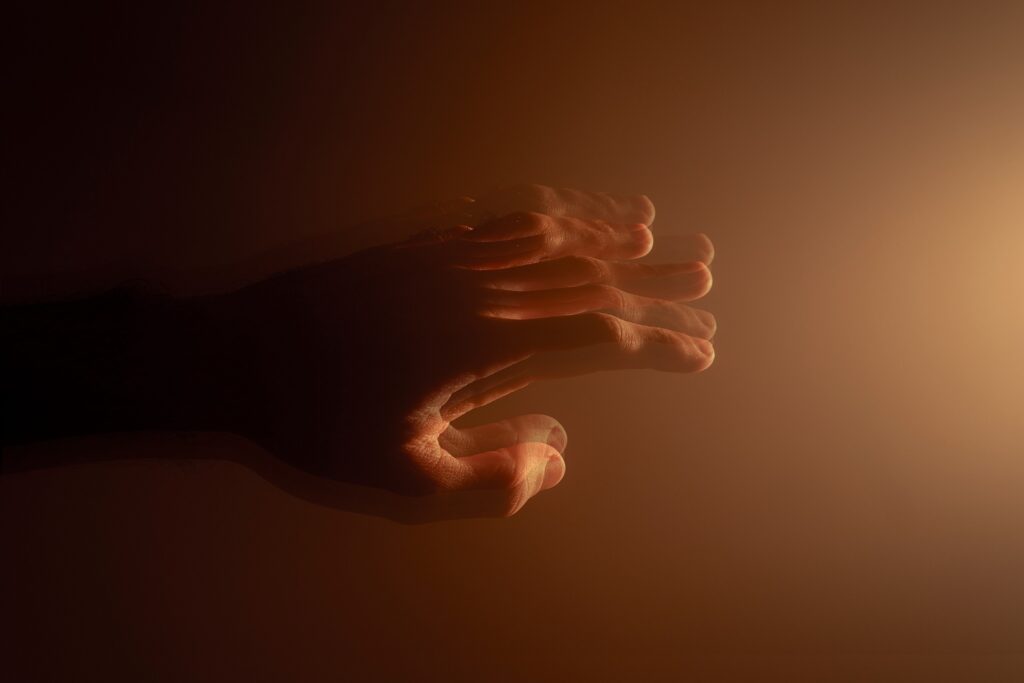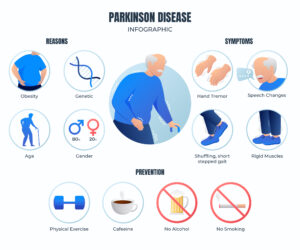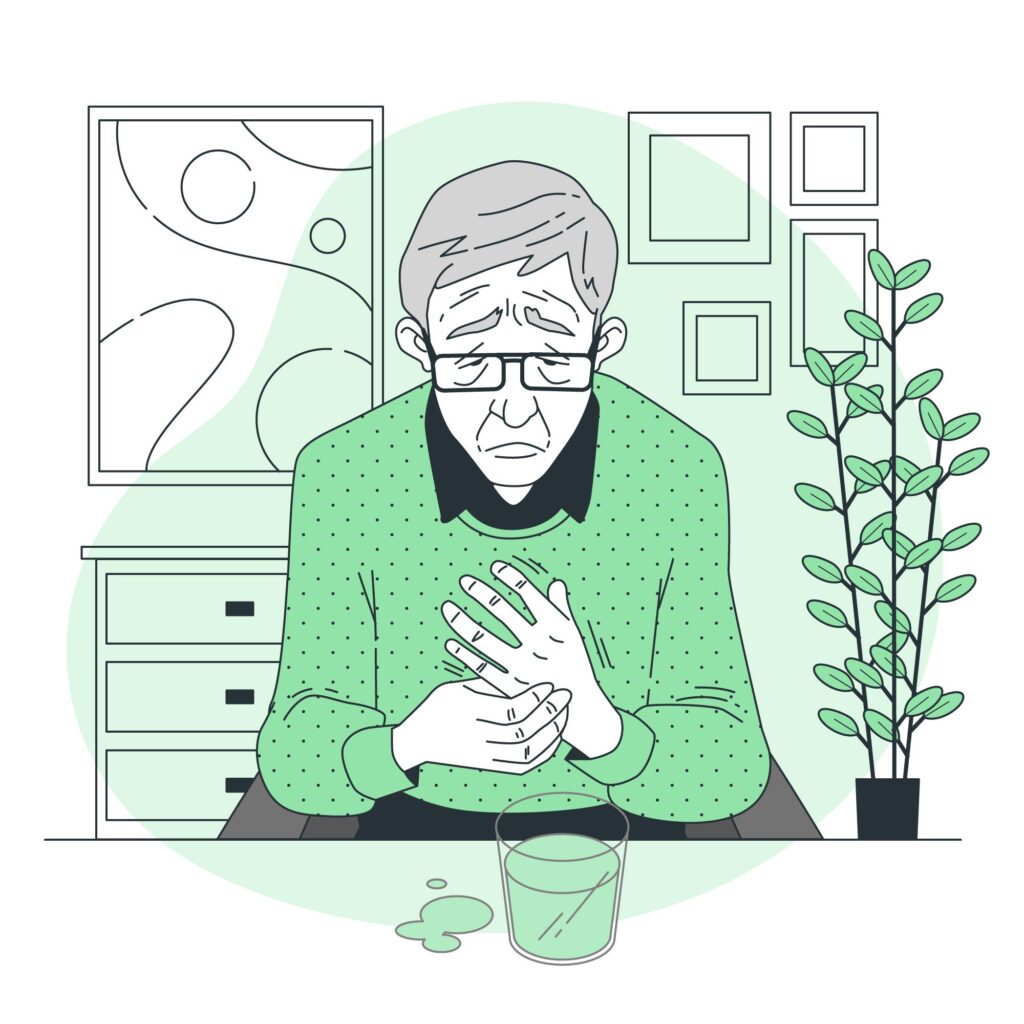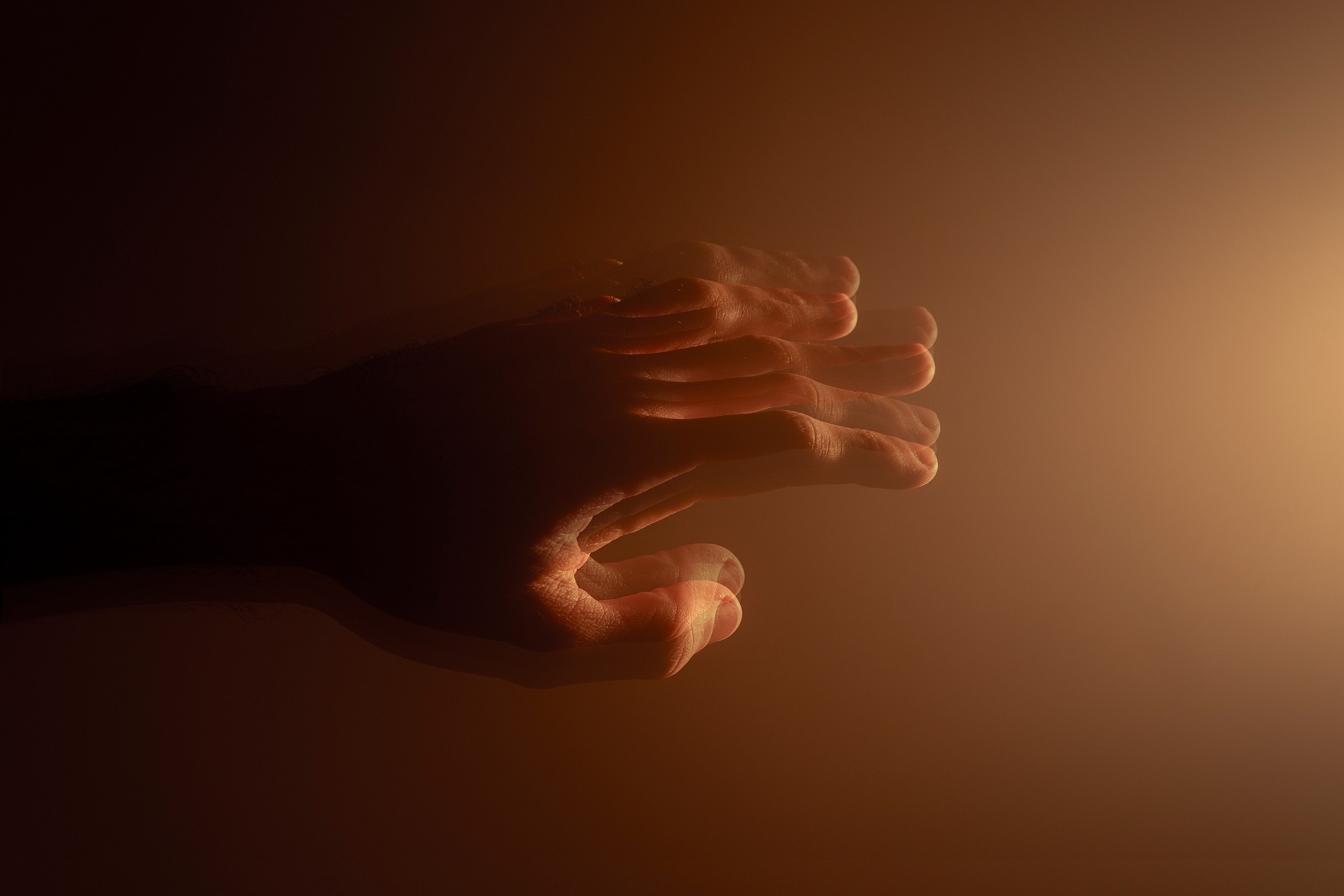Parkinson’s disease is a movement disorder that affects individuals causing slowness in movements and tremors. It is a disorder that progresses slowly affecting the nervous system and parts of the body controlled by nerves such as movements. It is a very common neurological disease that can’t be completely cured but the symptoms can be managed and disease progression can be slowed through treatment. It is idiopathic and a proper cause is not identified. But it is found that many factors increase the risk of getting the disease.

Risk Factors
- Aging is proven to increase the risk. People over 60 years are prone to get this disease more than the younger populations.
- Men are more at risk of getting the disease than females.
- Epidemiology has proven an increased risk with rural living and drinking well water.
- Pesticide exposure is also a proven risk factor.
- Some studies have proven that non-smokers have a higher risk of developing Parkinson’s disease.
- Genetic predisposition for ones who have relatives with Parkinson’s disease
Signs and Symptoms of Parkinson’s Disease
Most signs and symptoms occur after the onset of the disease and when it has progressed to a certain extent. Although abnormal movements are characteristic features of Parkinson’s disease, those features do not occur initially. First, non-specific symptoms as given below will manifest up to 7 years or longer from the onset of the disease.

- Loss in the sensation of smell
- Pains and body aches
- Sleep disorders
- Anxiety
- Depression
- Urinary urgency and incontinence
- Constipation
- Restless leg syndrome
Later slowly abnormalities of movement can occur, most often when patients are in their old age. Those abnormalities of movements are given below.
- Slowing of movement is the cardinal clinical feature of Parkinson’s disease and the main cause of disability. Progressive fatigue, difficulty in initiating movements, and usually upper limb is affected first in one side of the body.
- A person becomes unable to do rapid repetitive movements such as writing and buttoning up a shirt.
- The frequency of spontaneous blinking diminishes giving a serpentine stare.
- Facial movement disability gives a mask-like face, with no or minimal facial expressions.
- Tremors occur initially in the hand and fingers on one side of the body which spreads to the leg of the same side. Can affect the other side of the body as well with time. This tremor occurs when you are at rest and disappear when your hand is in motion.
- Stiffness on passive movements of limbs is called lead pipe rigidity as stiffness is present throughout the entire range of movements.
- Posture becomes stooped and gait becomes unstable.
- Small stride strength, slow turns, freezing, and reduced arm swing are the abnormalities that occur in the gait.
- Speech becomes quiet, indistinct, and flat.
- Drooling and swallowing difficulties may also arise in later stages.
- Psychiatric changes such as depression can occur.
Diagnosis of Parkinson’s Disease
There are no specific laboratory tests identified to reach the diagnosis of Parkinson’s disease. History and physical examination are the main methods of diagnosis. Motor symptoms such as Parkinson’s gait, tremors, and rigidity are the main features identified during a clinical examination. Imaging tests such as Magnetic Resonant Imaging (MRI) can also be used to confirm the diagnosis.
Initially, the patients must be educated about the disease condition, how the disease progressed, and how it should be managed.
Management of Parkinson’s Disease
Pharmacological Management
- The mainstay of pharmacological management is the administration of Dopamine through Dopamine replacement therapy (Levodopa) or Dopamine agonist therapy as it improves motor symptoms. But in the early stages of the disease, dopamine replacement therapy may not be needed and it must only be given when symptoms start to occur.
- Other drugs such as Selegiline, Amantadine, Anticholinergics, and Amorphines can also be given.
- As the disease progress with time, medical therapy for Parkinson’s disease may become more difficult as higher doses of dopamine replacement therapy will be needed.
- Deep brain stimulation through the insertion of electrodes is proven to improve the symptoms of many patients.
- Continuous infusion of Levodopa gel into the small intestine is also a proven treatment method used for patients with severe motor compliance.
Lifestyle Management
- Regular exercise can improve balance, and mobility symptoms and increase the quality of life. Exercises such as Yoga, Pilates, dance, and weight training can be done after getting initial approval from your doctor. Although regular exercise is essential you have to be cautious to avoid injuries by not pushing yourself so hard.
- Exercise during the day time can improve your sleeping quality at night as well.
- Nutrition is an essential factor to improve your well-being, this can be done by getting a balanced diet with plenty of fruits, vegetables, whole grains, and lean protein.
- Avoid consumption of alcohol.
- Improve sleeping habits and set regular times for sleeping. Through this, you can ensure that you are getting adequate sleep which is essential for a good quality of life.
- Physiotherapy, occupational therapy, and speech therapy can also reduce disabilities in speech, swallowing, and walking.
- Walking aids such as frames or tripods can also help with walking while avoiding falls.
- It is important to inform the family members or caretakers about the disease and the symptoms along with the need for their support to look after and ensure the patient is having a good quality of life. They must be informed to watch out for the patient as he or she can easily get into falls and accidents.
Complications of Parkinson’s Disease
- Cognitive problems and thinking difficulties
- Depression and other emotional changes such as fear, anxiety, or loss of motivation.
- Drooling due to the accumulation of saliva in your mouth as you are having difficulties in swallowing.
- As the muscles of mastication are affected the patients may become unable to chew properly which can cause choking and poor nutrition.
- Sleeping issues such as waking up frequently throughout the night, waking up early, or falling asleep during the day can be experienced by patients which can cause irritation and fatigue throughout the day due to lack of sleep.
- Urinary incontinence and difficulty in urination can also cause discomfort
- Constipation can also be a troublesome complication.
- Blood pressure can drop suddenly which makes you experience sudden lightheadedness or headache especially when you change your position from sitting or sleeping to standing.
- Sexual dysfunction
- Pain in one part or through the whole body

References
- Bailey and Love’s Short Practice of Surgery- 27th Edition
- Kumar and Clerk’s Clinical Medicine -8th Edition- Parveen Kumar, Michael Clark
- Oxford Handbook of Clinical Medicine – 10th Edition
- Browse’s Introduction to the Symptoms and Signs of Surgical Disease – 4th Edition – Norman L. Browse, John Black, Kevin G. Burnand and William E.G. Thomas
- Image by storyset on Freepik
- Image by pikisuperstar on Freepik
- Image by Annick Vanblaere from Pixabay

